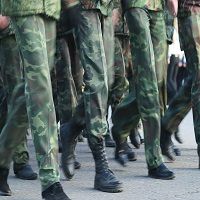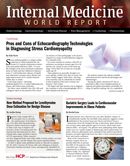Publication
Article
Internal Medicine World Report
Researchers Aim to Understand Extremity Pain Among Military
Author(s):
Chronic exertional compartment syndrome (CECS), a common condition among individuals who served in the military, is disproportionately untreated and misunderstood, according to research in Clinics in Sports Medicine, which aimed to highlight viable treatments.

Chronic exertional compartment syndrome (CECS), a common condition among individuals who served in the military, is disproportionately untreated and misunderstood, according to research in Clinics in Sports Medicine, which aimed to highlight viable treatments.
The development of CECS, the second most common form of exertional leg pain, is common among athletic individuals. The condition, which is usually identified in an ambulatory setting, involves pain, tightness, cramps, weakness, and diminished sensation in the affected region. When the condition is prevalent, affected patients can experience their interstitial pressure rises above the diastolic pressure of a closed fascial area.
“Compromised vascular perfusion leads to tissue ischemia, metabolite accumulation, and extremity pain. Alternatively, other investigators have proposed that fluid extravasation and increased intracompartmental pressures (ICPs) contribute to neural compression and potentially irreversible damage with chronic untreated compartment syndrome,” the researchers noted.
Researchers, who looked into the epidemiology, risk factors, diagnosis, and management of CECS made the following key points:
â— Since only 41% of patients benefitted from nonoperative therapies (e.g. activity modification, ice, medication), most CECS patients will need surgery.
â— While nonoperative therapies weren’t extremely effective, all patients who took on a “forefront” running method while exercising reported improvement in exercise performance and associated pain.
â— For isolated anterior, lateral, or combined anterolateral involvement, a single lateral incision may be used.
â— Despite its controversy, fasciotomy of the anterior compartment is acceptable for CECS treatment when lateral compartment isn’t involved. However, individuals in the military rarely experience this type of CECS.
â— Rigorous physical routine explains the lower success rate of surgery in people in the military versus civilians, with 25% unable to return to duty.
Based on the analysis, investigators emphasized the differences in success and viable treatments depending on the patients’ background. As a result, relief for patients lies in education, activity modification, and gait retraining.






